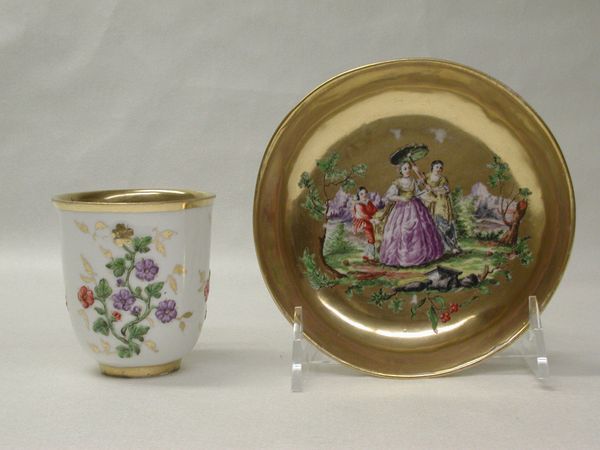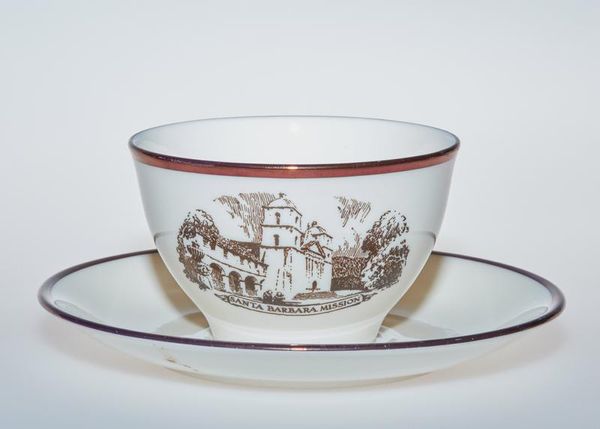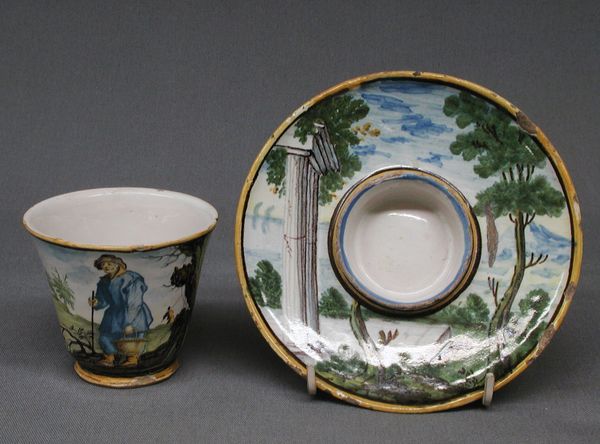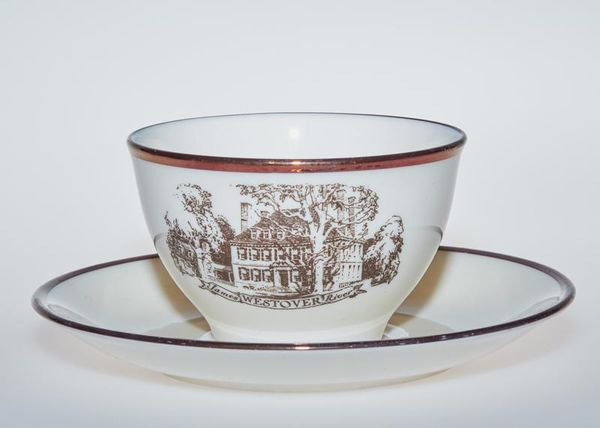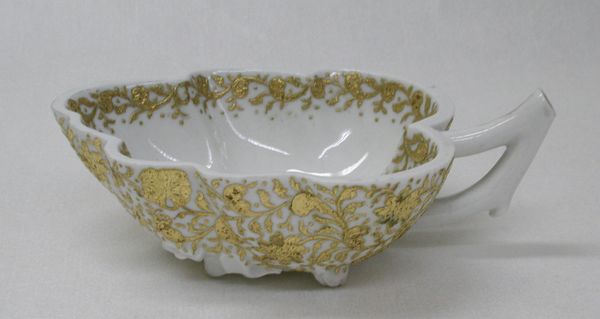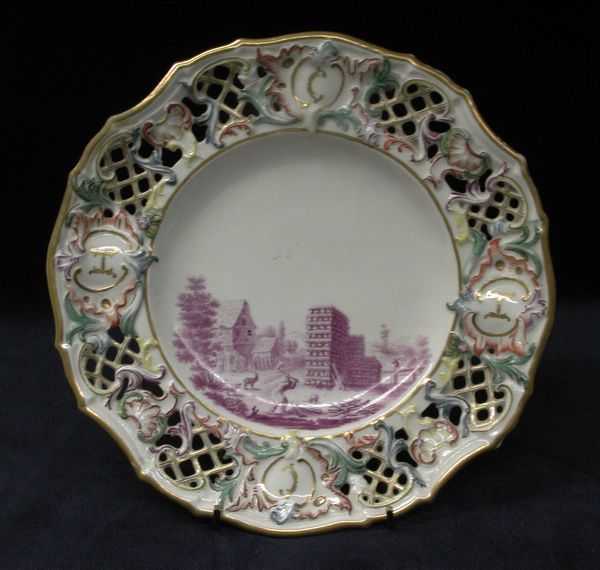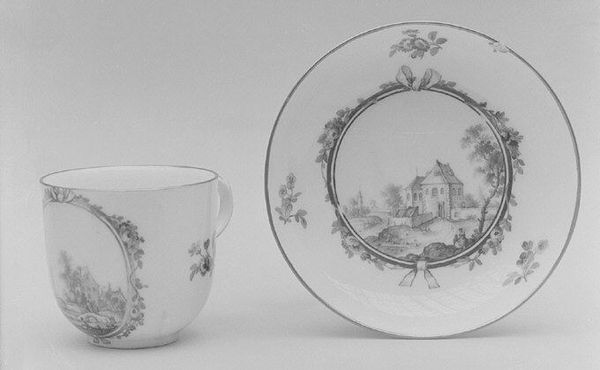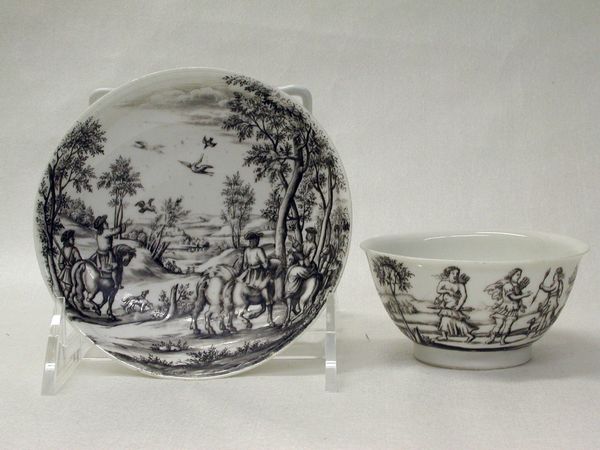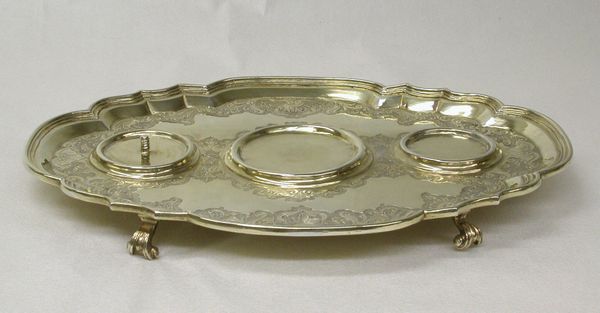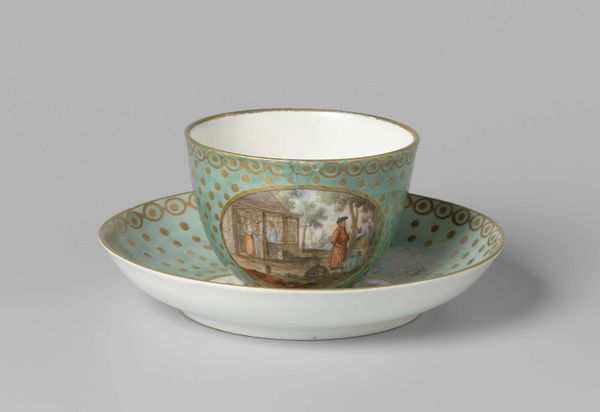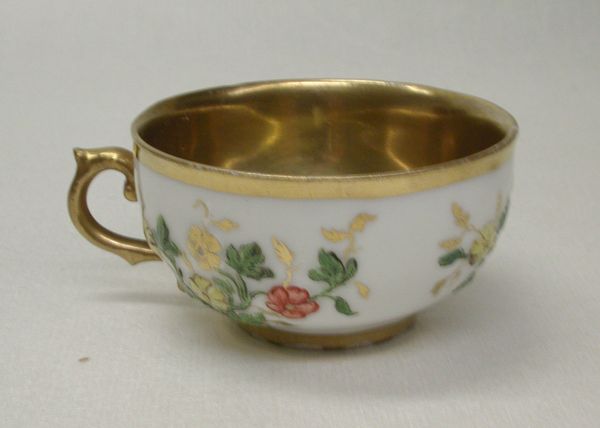
ceramic, porcelain
#
asian-art
#
ceramic
#
porcelain
#
decorative-art
Dimensions: Overall (cup .38): 1 15/16 × 3 3/8 in. (4.9 × 8.6 cm); Diameter (saucer .39): 5 in. (12.7 cm)
Copyright: Public Domain
Editor: Here we have a delicate porcelain cup and saucer made by Meissen Manufactory between 1715 and 1735. The gilding and imagery give it an exquisite preciousness, even hinting at chinoiserie. I'm curious about how a piece like this would have been received in its time. What are your thoughts on this luxurious little object? Curator: The fascination with Asian art and culture in Europe during the early 18th century played a significant role here. Aristocracy widely coveted Meissen porcelain, using these pieces as symbols of status and refinement. Can you see how the designs on the cup and saucer are themselves interpretations, often imagined, of Asian aesthetics? Editor: Yes, it is less about accuracy and more about European fantasy. Was the imagery also commenting on the exoticism, perhaps even the exploitation, that underpinned this artistic fascination? Curator: That's a keen observation! While directly referencing exploitation is perhaps too pointed, it's true that these objects served as emblems of colonial power and wealth. European courts essentially possessed this aesthetic. They controlled both the trade and the interpretation of distant lands within their own cultural context. To own such an object, displayed power over materials, techniques, and even knowledge. Editor: So this cup and saucer aren’t just beautiful objects; they’re potent symbols of a specific historical power dynamic. I wouldn't have considered the deeper layers beyond just its beauty, but thinking about who could afford it, and what that ownership meant at that moment changes everything. Thank you for shedding light on the fascinating history embedded within this piece. Curator: It’s objects like these that reveal so much about the society that produced and consumed them. Now, consider how we, today, shape and interpret such historical meanings through institutions like the Metropolitan Museum. That adds another layer of history altogether!
Comments
No comments
Be the first to comment and join the conversation on the ultimate creative platform.


